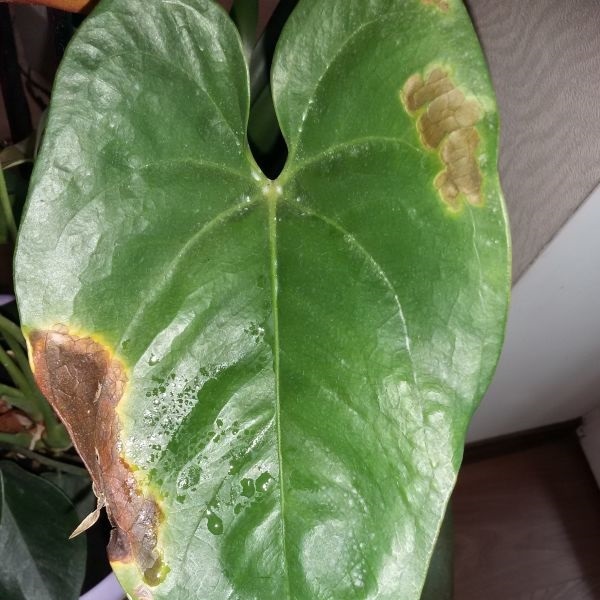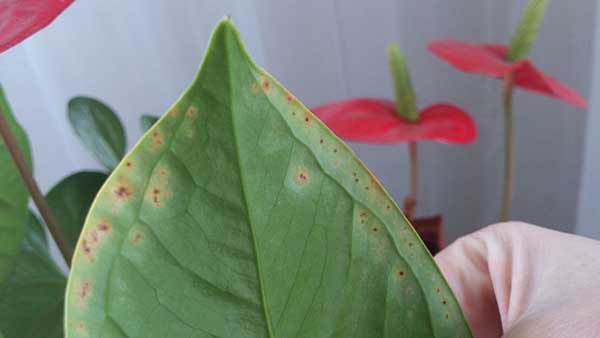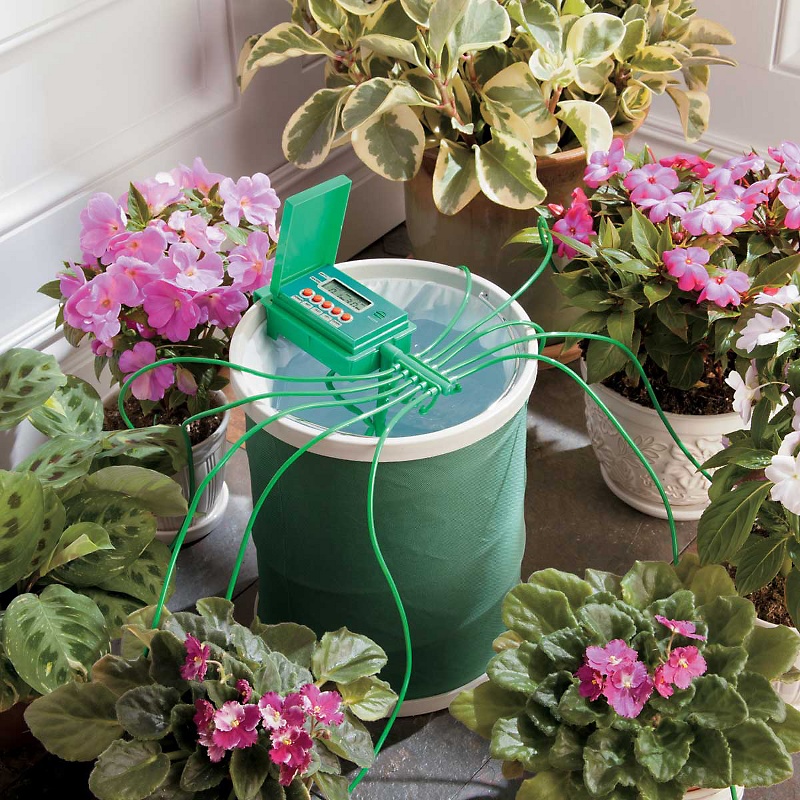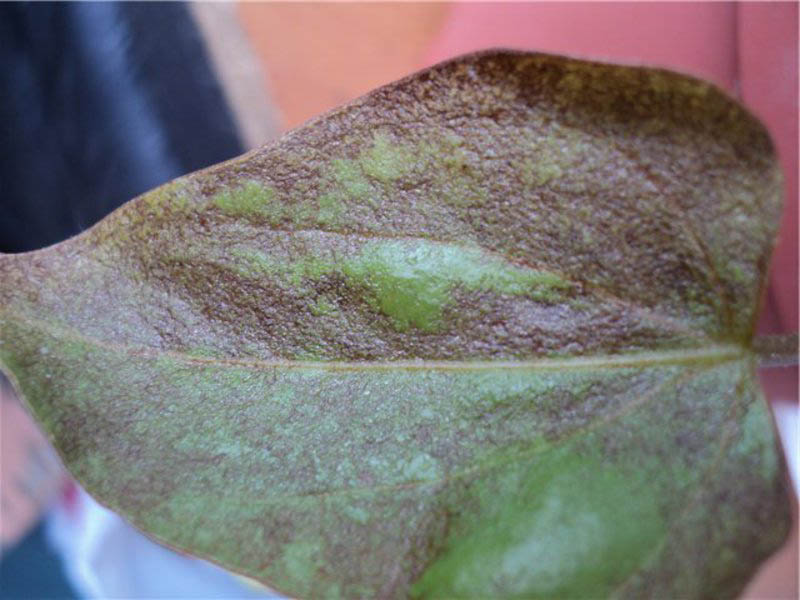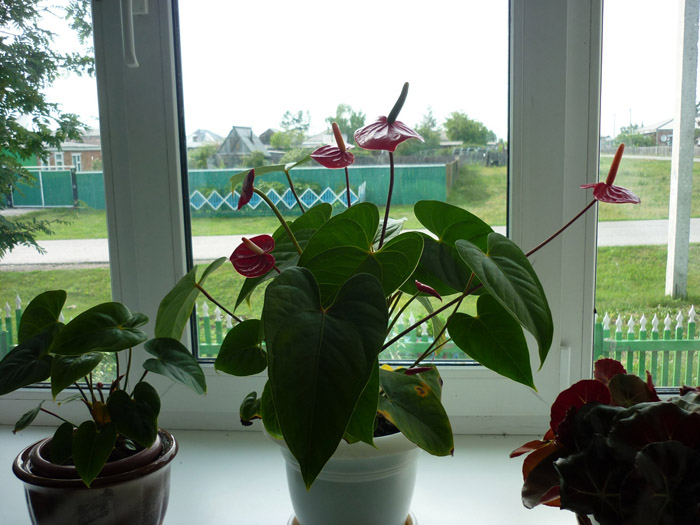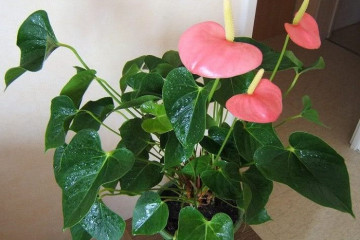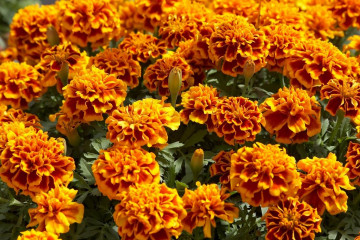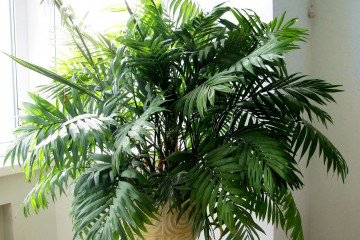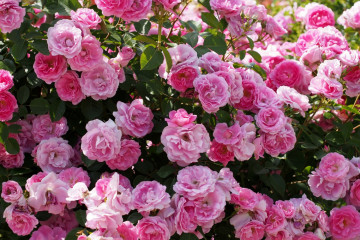Anthurium flower - why leaves and flowers turn black and dry
Content:
If the leaves of anthurium turn black, this can signal improper care, as well as the appearance of pests and diseases. At first, these are small spots, and later the leaves completely blacken and fall off. If the cause is not identified and treatment is not started, the process can lead to the death of the flower.
Anthurium: why leaves and flowers turn black and dry
The causes of blackening of the leaves can be different: from diseases to improper nutrition and watering. When spots are found, it is necessary to determine as quickly as possible why the leaves of the anthurium turn black. The further procedure will depend on this.
Diseases
Most often, the flower is susceptible to the following diseases:
- Fusarium wilting. This disease negatively affects the leaves and stems, and also affects the root system. The natural shape of the stem changes first. Later, the leaves begin to turn black.
- Anthracnose. The disease is caused by a fungus. Small dots appear on the leaves - spores of the fungus. Then they turn into brown specks, which grow over time and can turn black. Holes appear in the center of the spots. The prerequisites for the development of the disease are excessive soil moisture and high (about 27-29 ° C) ambient temperature.
- Septoria. This fungal disease also actively develops in the presence of moisture and high temperatures. The development of the disease is indicated by the appearance of yellow spots with brown edges. Leaves darken and dry quickly, and fast-growing spores can easily infect nearby plants.
Pest attack
In addition to diseases, pests can have a negative effect on the plant. Most often, anthurium is affected by aphids and scale insects.
Aphids are tiny pests that multiply at a high rate, forming large colonies. The insect feeds on plant sap and pierces tissue. Aphids settle on the inside of a leaf, so they cannot be detected immediately. The consequences of its activity are twisted leaves, dry parts of the plant, growth retardation.
Scabbards are small sucking pests that are reliably protected by a dense shell. They suck out the juice and prevent flowers from developing. When insects appear, anthurium leaves are covered with brown or beige convex elliptical nodules that can be lifted with a needle or toothpick.
Contact insecticides do not help to cope with aphids, therefore they destroy pests with systemic drugs - Confidor, Bankol or Biotlin. Their active substances penetrate into the plant and poison the sap, which, if it gets into insects, kills them.
Dry air
Due to insufficient air humidity, anthurium leaves first curl up and then change color. As a result, this can cause the death of the plant. To prevent the problem, you should regularly (preferably every day) spray water on the leaves and into the air.
Fertilization errors
An excess of nitrogenous fertilizers is dangerous for the leaves and root system of anthurium, as it slows down the ripening of the flower, and all the nutrients go to the formation of green mass. If there is a lot of calcium in the feeding, this leads to a lack of magnesium, potassium, iron and other nutrients.In both cases, the leaves of anthurium begin to turn black. In order to prevent a problem from arising, when using dressings, you must strictly follow the instructions, observing the dosages and terms.
Improper watering
Anthurium does not like waterlogging of the soil. This means that when watering the plant, you cannot be zealous. Moisten the soil only when it is completely dry. Hard or cold water also harms anthurium. The temperature should vary depending on the season: in spring and summer - 22 ° C, in autumn and winter - 18 ° C. Boiled water should be used for watering.
How to keep a plant
To protect the anthurium flower from any disease, adequate care must be taken. To eliminate wilting and blackening of the leaves, you will have to use fungicidal preparations.
Plant processing methods:
- If fungal diseases, bacteria or viruses are found on the anthurium, the likelihood of a cure is very small. All infected leaves must be removed immediately.
- When blackness appears, spray the leaves from a spray bottle with a fungicide containing a lot of copper. If rust occurs, it is necessary to spray it on healthy bushes to increase moisture, and affected green leaves with spots should be completely removed and burned.
- To destroy anthracnose, reduce the amount of water and the number of irrigations, and the roots of anthurium are irrigated with preparations with copper. The soil mixture in the pot must be treated with Abiga-Peak. If the flower cannot be cured, it must be burned whole so that the disease does not spread to other crops.
Preventive measures
Prevention of anthurium blackening consists in proper care and providing favorable conditions for its life.
Helpful tips for proper care
In order for the anthurium bushes to bloom all year round, and the flowers to be beautiful and bright, it is necessary to take care of it correctly and in a timely manner. Key recommendations:
- Choice of premises. In the room, the anthurium should be placed on the southeast or west window so that the flower can receive enough sunlight. This will prevent the plant from getting burned by direct light at noon. In winter, the flower should be located away from the equipment for heating the room. If it is impossible to transfer the plant to another part of the house, a tray of water is placed next to the pot. When it evaporates, the air humidity will increase.
- The choice of soil and container for planting. Rhizomes can suffocate due to lack of oxygen. To avoid this, you need to use an air-permeable soil mixture. River sand and oak bark are added to it, as well as crushed peat. It is better to take a plastic pot.
- Humidity. To provide comfortable conditions for the anthurium, a tropical climate must be made for it. To do this, the leaves of the flower are sprayed daily with water and check if it drips onto the surface of the inflorescences. In addition, experts recommend regularly placing the flower pot in a pot of water for a few minutes.
- Watering. In hot summers, it is recommended to add nutrients to the soil along with water. This should be done no more than 2-3 times a week. In winter, the frequency of watering is reduced to once a week. It is better to irrigate the plant with a watering can or a spray bottle.After watering, it is recommended to wait until some of the water is absorbed, and remove the rest.
To determine the reason for the blackening of anthurium leaves, you need to constantly monitor the plant. Identified problems are better addressed early in the development of stains than by pulling out and discarding infected bushes.

